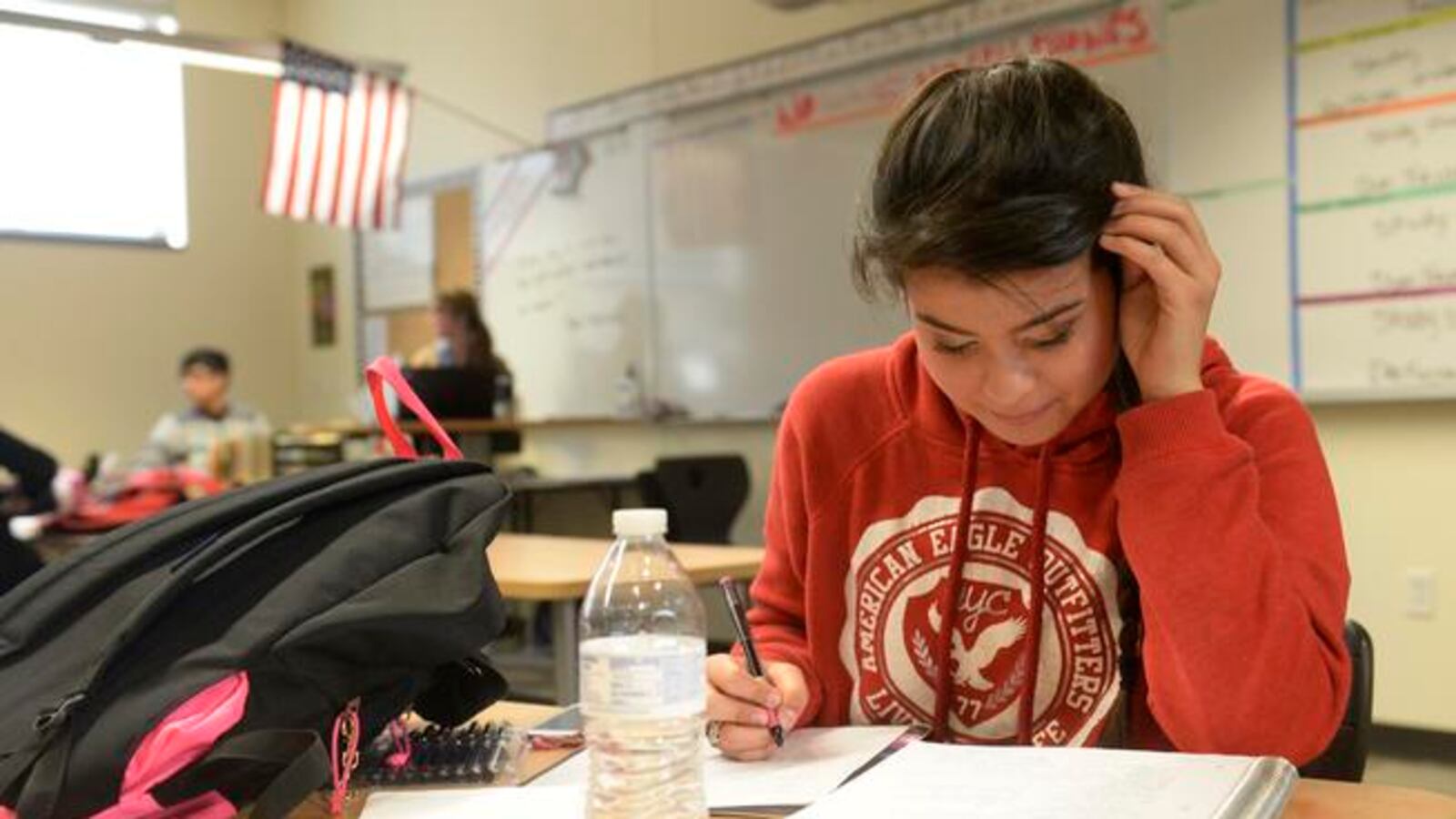Nearly 10 years ago, Mapleton Public Schools shut down its lone high school, replacing it with four smaller schools that gave students academic options.
Students and families in the academically struggling school district about 20 miles north of Denver were required to choose a school — from one with an international focus to another built around college preparation.
The decision to dissolve the district’s high school, coupled with smaller school improvement efforts at the elementary and middle school level, was considered a bold experiment at the time. A report released Wednesday by the education reform advocacy group A-Plus Colorado examined how things have turned out, concluding that the reforms have largely worked — but gradually.
The district’s average ACT score has jumped nine points. Its graduation rate has grown by 15 percentage points. More students are choosing to attend the district’s brick-and-mortar schools — as well as Mapleton’s online option.
For all the progress Mapleton has made since 2007, the district’s students still lag far below state averages on annual math and English assessments — particularly in elementary school — and a smaller percentage of students are going to college, the report found.
But the report, which was paid for by the Denver Foundation, illustrates how a school district that serves mostly low-income students and English learners has improved its schools at a slow and steady pace. (Chalkbeat is a grantee of the Denver Foundation.)
Other key findings include:
- For every one student who leaves the school district, two choose to enroll at a Mapleton school.
- The proportion of high school students proficient or above in reading has grown 19 percentage points since 2007.
- Student achievement levels are consistent across all schools. No one school does significantly better or worse than others.
The report authors and district officials are at odds over the question of how many students take the ACT college entrance exam, a requirement for Colorado high school juniors.
According to the report, 75 percent of Mapleton juniors took the ACT in 2015, down from 85 percent in 2013. The report authors calculated those numbers by comparing the number of juniors who took the ACT in the spring to the number of students who were enrolled in the fall, when the state determines official enrollment numbers.
Mapleton Superintendent Charlotte Ciancio disputed that methodology, saying her schools’ populations fluctuate.
“The number of kids who are here in October are not the same who are here in April,” she said.
A-Plus found that Mapleton’s ACT participation rate is 16 points lower than Denver Public Schools’ and 12 points lower than Aurora Public Schools’. Both Denver and Aurora educate students with similar demographics and mobility rates.
Ciancio also said the district’s participation rate fluctuates because students enrolled at the district’s online school must find their own way to a testing center to take the ACT. That doesn’t always happen, she said.
About 45 percent of all the district’s juniors this year are enrolled in the online school, according to state data.
The Colorado Department of Education calculated Mapleton’s ACT participation rate at 98 percent in 2014.
Looking ahead, Ciancio said Mapleton is already following many of the recommendations that A-Plus suggested, including regular checks on school quality.
Every classroom in Mapleton is visited monthly by a team of administrators, Ciancio said. Teachers also review student data quarterly.
The district is taking a closer look at its elementary schools, which have been the slowest to improve. The school board is expected to adopt a new reading program next month. And new training for elementary school teachers is on the way, Ciancio said.
But for now, the district doesn’t plan to make any changes at the high school level, she said.
“We’re proud of the results we’re getting,” Ciancio said.

